Categoría "Computing General"
Se han encontrado 10 Coincidencias.png)
Head-First Design Patterns
209 Visitas | 479 Descargas | 2013-09-16 17:58:20 | rmillo
You're not alone. At any given moment, somewhere in the world someone struggles with the same software design problems you have. You know you don't want to reinvent the wheel (or worse, a flat tire), so you look to Design Patterns--the lessons learned by those who've faced the same problems. With Design Patterns, you get to take advantage of the best practices and experience of others, so that you can spend your time on...something else. Something more challenging. Something more complex. Something more fun. You want to learn about the patterns that matter--why to use them, when to use them, how to use them (and when NOT to use them). But you don't just want to see how patterns look in a book, you want to know how they look "in the wild". In their native environment. In other words, in real world applications. You also want to learn how patterns are used in the Java API, and how to exploit Java's built-in pattern support in your own code. You want to learn the real OO design principles and why everything your boss told you about inheritance might be wrong (and what to do instead). You want to learn how those principles will help the next time you're up a creek without a design paddle pattern. Most importantly, you want to learn the "secret language" of Design Patterns so that you can hold your own with your co-worker (and impress cocktail party guests) when he casually mentions his stunningly clever use of Command, Facade, Proxy, and Factory in between sips of a martini. You'll easily counter with your deep understanding of why Singleton isn't as simple as it sounds, how the Factory is so often misunderstood, or on the real relationship between Decorator, Facade and Adapter. With Head First Design Patterns, you'll avoid the embarrassment of thinking Decorator is something from the "Trading Spaces" show. Best of all, in a way that won't put you to sleep! We think your time is too important (and too short) to spend it struggling with academic texts. If you've read a Head First book, you know what to expect--a visually-rich format designed for the way your brain works. Using the latest research in neurobiology, cognitive science, and learning theory, Head First Design Patterns will load patterns into your brain in a way that sticks. In a way that lets you put them to work immediately. In a way that makes you better at solving software design problems, and better at speaking the language of patterns with others on your team.
.png)
Head-First Software Development
146 Visitas | 262 Descargas | 2013-09-17 04:56:59 | rmillo
Even the best developers have seen well-intentioned software projects fail - often because the customer kept changing requirements, and end users didn't know how to use the software you developed. Instead of surrendering to these common problems, let "Head First Software Development" guide you through the best practices of software development. Before you know it, those failed projects will be a thing of the past. With its unique visually rich format, this book pulls together the hard lessons learned by expert software developers over the years. You'll gain essential information about each step of the software development lifecycle - requirements, design, coding, testing, implementing, and maintenance - and understand why and how different development processes work. This book is for you if you are: tired of your customers assuming you're psychic. You'll learn not only how to get good requirements, but how to make sure you're always building the software that customers want (even when they're not sure themselves); wondering when the other 15 programmers you need to get your project done on time are going to show up. You'll learn how some very simple scheduling and prioritizing will revolutionize your success rate in developing software; confused about being rational, agile, or a tester. You'll learn not only about the various development methodologies out there, but how to choose a solution that's right for your project; and, confused because the way you ran your last project worked so well, but failed miserably this time around. You'll learn how to tackle each project individually, combine lessons you've learned on previous projects with cutting-edge development techniques, and end up with great software on every project. "Head First Software Development" is here to help you learn in a way that your brain likes...and you'll have a blast along the way. Why pick up hundreds of boring books on the philosophy of this approach or the formal techniques required for that one? Stick with "Head First Software Development", and your projects will succeed like never before. Go on, get started...you'll learn and have fun. We promise.
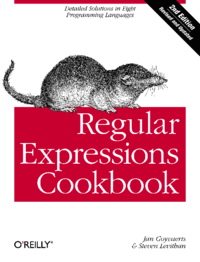
Regular Expressions Cookbook, Second Edition
Regular Expressions
123 Visitas | 159 Descargas | 2013-10-03 20:07:45 | ybpadron
We particularly wanted to show how you can use regular expressions in situations where people with limited regular expression experience would say it can’t be done, or where software purists would say a regular expression isn’t the right tool for the job. Because regular expressions are everywhere these days, they are often a readily available tool that can be used by end users, without the need to involve a team of programmers. Even programmers can often save time by using a few regular expressions for information retrieval and alteration tasks that would take hours or days to code in procedural code, or that would otherwise require a third-party library that needs prior review and management approval.
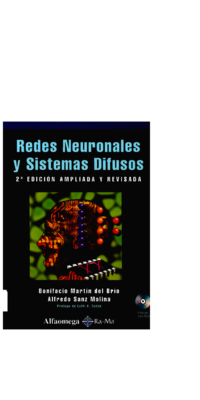
Redes neuronales y sistemas difusos 2da edicion.
Redes neuronales y sistemas difusos.
256 Visitas | 375 Descargas | 2013-10-07 13:35:41 | jbermudez
Este libro se dirige a todo aquel interesado en iniciarse en ambos campos, especialmente estudiantes, docentes y personal de la empresa. El texto podra ser seguido por quien cuente con una minima base matematica (calculo con matrices, derivadas, etc.), como la manejada en estudios de ciencias, ingenierias o econ6micas.
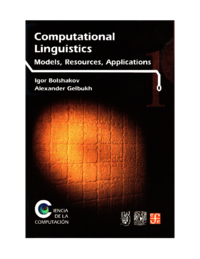
Computational Linguistics, Models, Resources, Applications
Modelación Computacional de Lenguajes Naturales
146 Visitas | 139 Descargas | 2013-10-21 19:54:27 | abelm
Este libro trata sobre la modelación computacional de los lenguajes naturales(como suele llamarse a las lenguas o idiomas humanos), aplicaciones informáticas generados a partir del estudio de la computación lingüística, y un examen de nivel medio sobre el modelo computacional de la lengua "MeaningText".
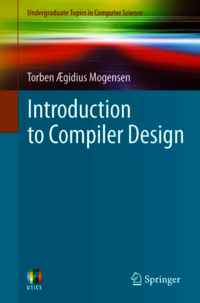
Introduction to Compiler Design
165 Visitas | 273 Descargas | 2014-01-28 19:43:12 | josedanielr
The 1rst chapters of the book describes the methods and tools required to read program text and convert it into a form suitable for computer manipulation. This process is made in two stages: A lexical analysis stage that basically divides the input text into a list of “words”. This is followed by a syntax analysis (or parsing) stage that analyses the way these words form structures and converts the text into a data structure that reflects the textual structure. Lexical analysis is covered in Chap. 1 and syntactical analysis in Chap. 2. The remainder of the book (Chaps. 3–9) covers the middle part and back-end of interpreters and compilers. Chapter 3 covers how definitions and uses of names (identifiers) are connected through symbol tables. Chapter 4 shows how you can implement a simple programming language by writing an interpreter and notes that this gives a considerable overhead that can be reduced by doing more things before executing the program, which leads to the following chapters about static type checking (Chap. 5) and compilation (Chaps. 6–9. In Chap. 6, it is shown how expressions and statements can be compiled into an intermediate language, a language that is close to machine language but hides machine-specific details. In Chap. 7,it is discussed how the intermediate language can be converted into “real” machine code. Doing this well requires that the registers in the processor are used to store thevalues of variables, which is achieved by a register allocation process, as described in Chap. 8. Up to this point, a “program” has been what corresponds to the body of a single procedure. Procedure calls add some issues, which are discussed in Chap. 9. The book uses standard set notation and equations over sets. Appendix contains a short summary of these, which may be helpful to those that need these concepts refreshed.

SQL Reference
SQL
136 Visitas | 190 Descargas | 2014-03-28 20:25:40 | josedanielr
This book is intended for anyone who wants to use the Structured Query Language (SQL) to access a database. It is primarily for programmers and database administrators, but it can also be used by general users using the command line processor. This book is a reference rather than a tutorial. It assumes that you will be writing application programs and therefore presents the full functions of the database manager.

SQL Pocket Guide
SQL
163 Visitas | 186 Descargas | 2014-03-28 20:28:35 | josedanielr
This book is an attempt to cram the most useful information about SQL into a pocket-size guide. It covers commonly used syntax for the following platforms: IBM DB2 Release 9.7, MySQL 5.1, Oracle Database 11g Release 2, PostgreSQL 9.0, and Microsoft SQL Server 2008 Release 2. Not all syntax will work on all platforms, and some features may not be available in earlier releases of these products. Whenever possible, I’ve tried to note any product or release dependencies.
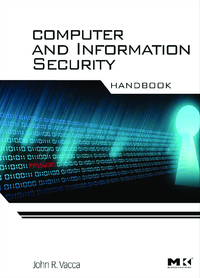
Computer and Information Security Handbook
100 Visitas | 148 Descargas | 2014-05-29 02:52:57 | raulito
The Computer and Information Security Handbook is an essential reference guide for professionals in all realms of computer security. Researchers in academia, industry, and government as well as students of security will find the Handbook helpful in expediting security research efforts. The Handbook should become a part of every corporate, government, and university library around the world.

Regular Expressions: The Complete Tutorial
Expresiones regulares
182 Visitas | 156 Descargas | 2016-09-13 16:44:52 | josedaniel
There are many software applications and programming languages that support regular expressions. If you are a programmer, you can save yourself lots of time and effort. You can often accomplish with a single regular expression in one or a few lines of code what would otherwise take dozens or hundreds. If you are not a programmer, you use regular expressions in many situations just as well. They will make finding information a lot easier. You can use them in powerful search and replace operations to quickly make changes across large numbers of files. A simple example is «gr[ae]y» which will find both spellings of the word grey in one operation, instead of two. There are many text editors and search and replace tools with decent regex support. This tutorial is quite unique because it not only explains the regex syntax, but also describes in detail how the regex engine actually goes about its work. You will learn quite a lot, even if you have already been using regular expressions for some time. This will help you to understand quickly why a particular regex does not do what you initially expected, saving you lots of guesswork and head scratching when writing more complex regexes.
Contribuir
Usted puede contribuir con Libros UCLV, es importante para nosotros su aporte..
Contribuir